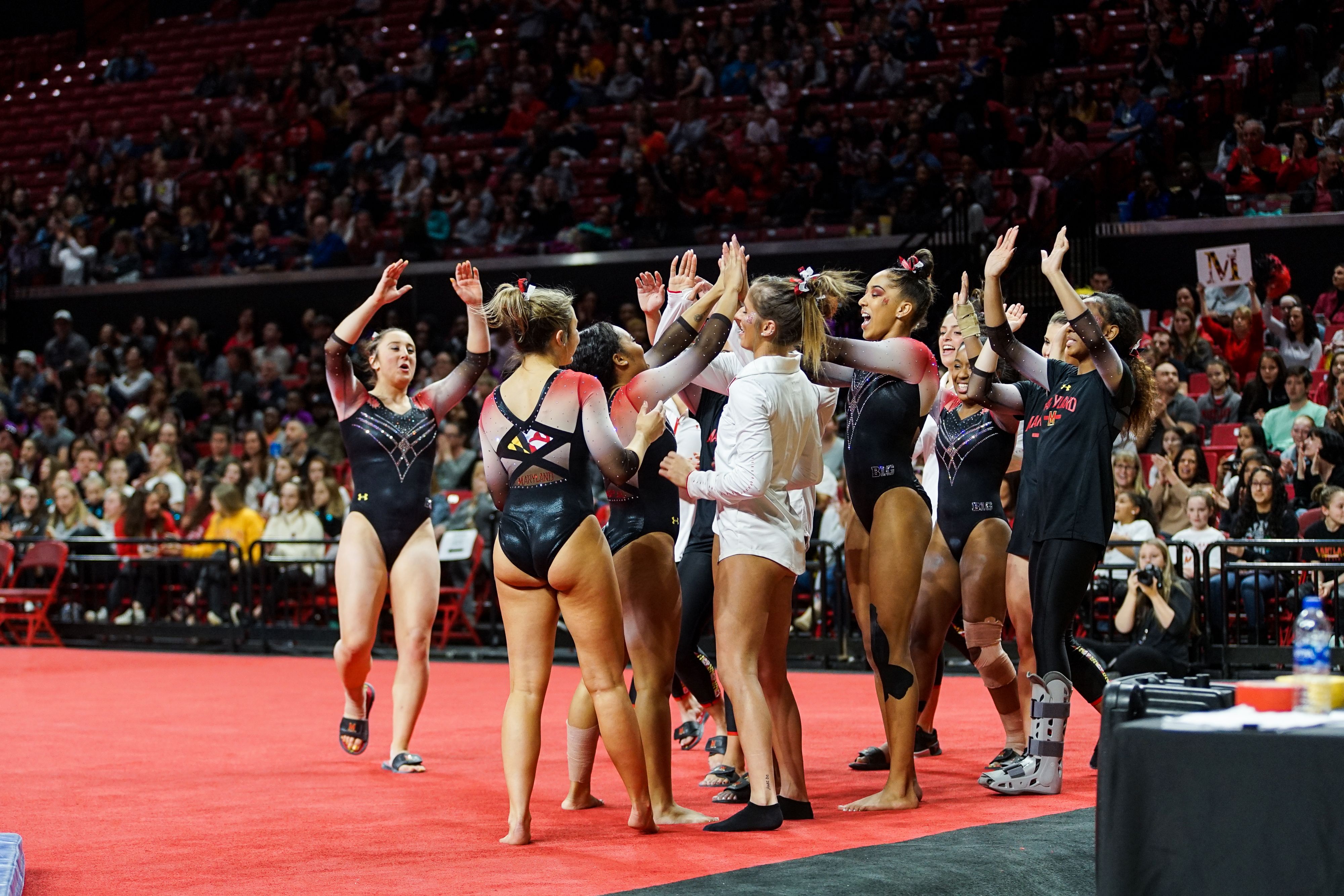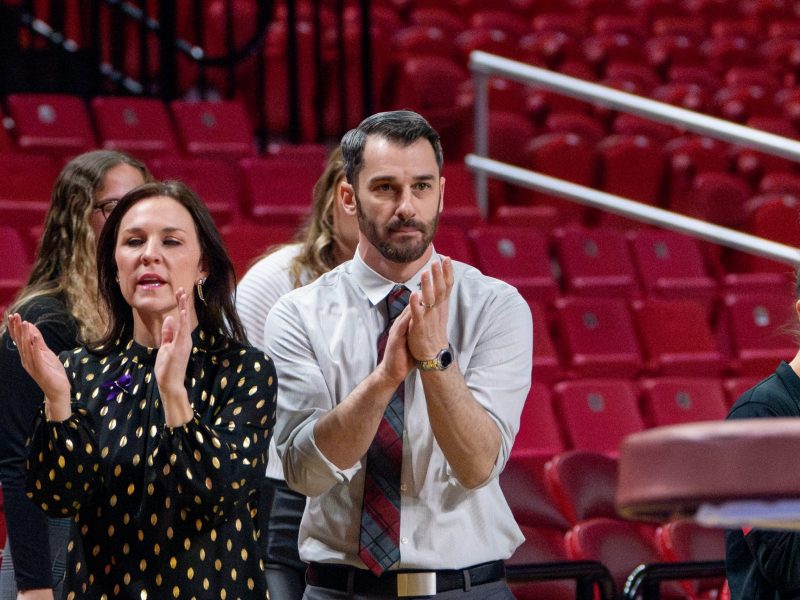As the Maryland gymnastics team gathered into a tightly-packed conference room in Xfinity Center to watch Monday’s NCAA tournament selection show, the team was already assured it had a spot in the field, comfortably positioned among the top 36 teams in the country.
But with a new postseason format, the No. 28 Terps couldn’t be certain they’d avoid a dreaded play-in meet, depending on how the selection committee constructed the four regionals, and where it sent the Terps.
And after sitting patiently through the first two regionals, the coaches and gymnasts offering occassional commentary about the selections to that point, they erupted when their name flashed on the screen as a member of the Athens regional, having accomplished their goal of bypassing the play-in meet.
“We’re thrilled,” coach Brett Nelligan said. “For us to finish in the top 28 [and] earn that first-round bye is everything. … We’ve put ourselves in a really good position to try to advance.”
[Read more: Maryland gymnastics earns 194.8 at Big Ten championships after faltering on beam]
Maryland’s No. 28 ranking is its highest since 2013. Joining the Terps in the night session of the Athens regional April 6 is No. 1 overall seed Oklahoma, No. 16 California and the winner of the first-round meet between New Hampshire and NC State.
This is the first year of a postseason format that kept the traditional 36-team field, but changed its organization. Rather than six sites with six teams apiece, there are four sites with nine teams. And instead of 12 teams advancing to the national semifinals, with six teams moving on to the national championship meet, eight will advance to the semifinals, and four will compete for a national championship.
[Read more: Floor was the bright spot of Maryland gymnastics’ underwhelming Big Ten championships]
If Maryland finishes in first or second in its opening meet, it will move on to a four-team regional final the following day. The top-two finishers in that meet will move on to the national semifinals.
“If we go into regionals and have fun and do our thing that we’ve been doing, I know we’re just going to do amazing,” junior Alecia Farina said. “[We] definitely have the potential to move on to the next round.”
Maryland struggled to start the season, failing to post a 194 in two of its first three meets and making the road to an NCAA regional difficult.
“At that point, [we felt like] we were looking uphill at the season,” Nelligan said. “We’ve battled and we’ve climbed that hill and now we’re standing on the top … and it’s a great feeling.”
The Terps broke 195 in all four of their February meets, coming up just short of 196 in an upset win over Ohio State on Feb. 8. And by closing the regular season with a 196.525 and 196.45 in the final two meets, not even a disappointing 194.8 at the Big Ten Championships could keep them from a first-round bye.
Maryland isn’t overreacting to the slip-up at the conference championship meeet, though.
“[We] just have to keep doing what we’re doing,” freshman Sanya Glauber said. “I don’t think we need to change anything necessarily, [we] just gotta keep repeating and … have confidence.”
Last season, the Terps entered the postseason ranked No. 31. Their 195.85 at the Raleigh regional placed fourth and was the highest postseason score in program history. Of Maryland’s 24 routines at that meet, 20 were performed by gymnasts who returned this year, giving the team belief it can make noise in Athens.
“We did really well [at] just enjoying ourselves out there,” junior Kirsten Peterman said. “Just go there and repeat what we did last year.”



